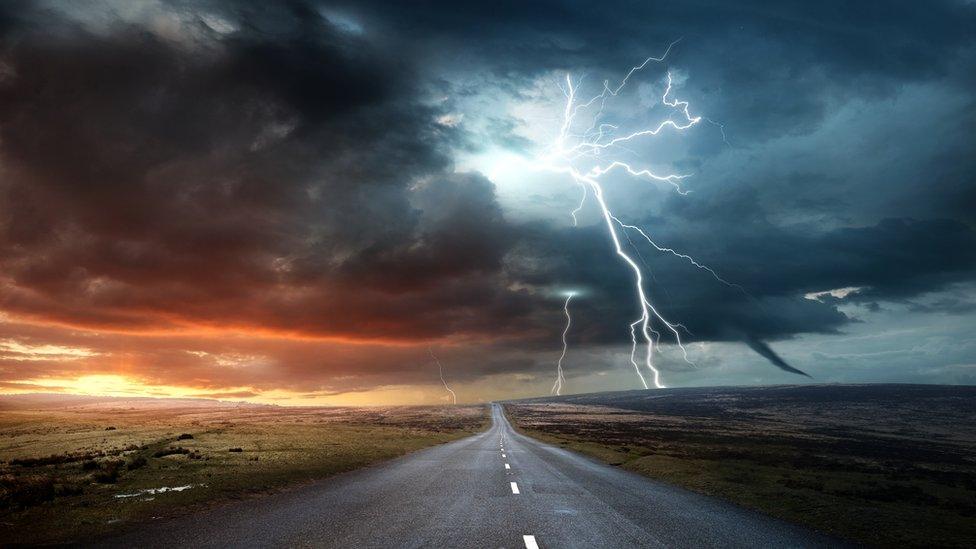Summer storms: Why do we get thunderstorms after hot weather?
- Published
- comments

Thunderstorms often come soon after a heatwave but why?
You've probably already noticed, but it has been HOT recently.
Not only that, but alongside all the warm weather, lots of parts of the UK have had really big thunderstorms.
These summer storms are pretty common when the weather gets warm - but why?
We've got everything you need to know about summer storms!
How are thunderstorms made?
Thunderstorms need heat in order to form.
When air heats up, it rises, as warm air is lighter than cold air. It also evaporates moisture in the air, turning it into a gas.
The heatwave we've been having has created the perfect conditions for thunderstorms
However, the higher it gets, the more it starts to cool down. When it gets high enough, the water vapour it brought up with it condenses, and turns back into water droplets.
If this happens quickly enough, it will form what's called a cumulonimbus cloud.
Cloud names mostly come from Latin and usually combine the following words:
Stratus/strato: flat/layered and smooth
Cumulus/cumulo: heaped up/puffy, like cauliflower
Cirrus/cirro: high up/wispy
Alto: medium level
Nimbus/Nimbo: the cloud contains rain
When the names are combined, it can tell us a bit about what the cloud is like. So, for example, a nimbostratus cloud is flat and has the potential for rain.
Other cloud names include cirrus, cumulonimbus and altostratus.
The Big Question: How are clouds made?
In this cloud, water droplets fuse together and freeze into ice crystals.
When they get big enough, and the updraft of air is no longer strong enough to keep them in the cloud, these crystals fall as hail.
These hailstones are what cause lightning
It's these hailstones that create the conditions needed for thunder and lightning, because as they fall, they rub against each other and produce electricity.
These electrical charges they produce are attracted to the Earth's surface, and when they become strong enough they come together to form lightning.
The thunder you can hear is a result of the immense amount of heat the lightning strike gives off - the heat makes the air around it expand very quickly, and this shockwave is the big 'clap' that you can hear.
The sound of thunder changes depending on how far away from the lightning strike you are - if it's low and rumbly, it usually means the lightning is quite far away, whereas a sharp, loud clap means it's closer.
The word thunder comes from 'Thor', the Norse god of thunder who's able to create thunderbolts - you may recognise the name from Marvel movies!
How are these summer storms different to other types of storms?
Every year, the UK's weather agency the Met Office releases a list of names for any storms that occur in the UK.
But these summer thunderstorms are not named.
How are storms named?
This is because they're entirely different weather systems, and are created in different ways.
One of main differences is that the summer storms are a lot harder to predict.
The Met Office told Newsround that they can tell when the conditions will be right for these storms, but it's very difficult to know when and where they will hit.
They said it was similar to boiling water - if you heat water up enough, you know at some point there will be bubbles, but you won't be able to predict where the first one will pop up.
If you cannot see the interactive activity on this page, click here.
